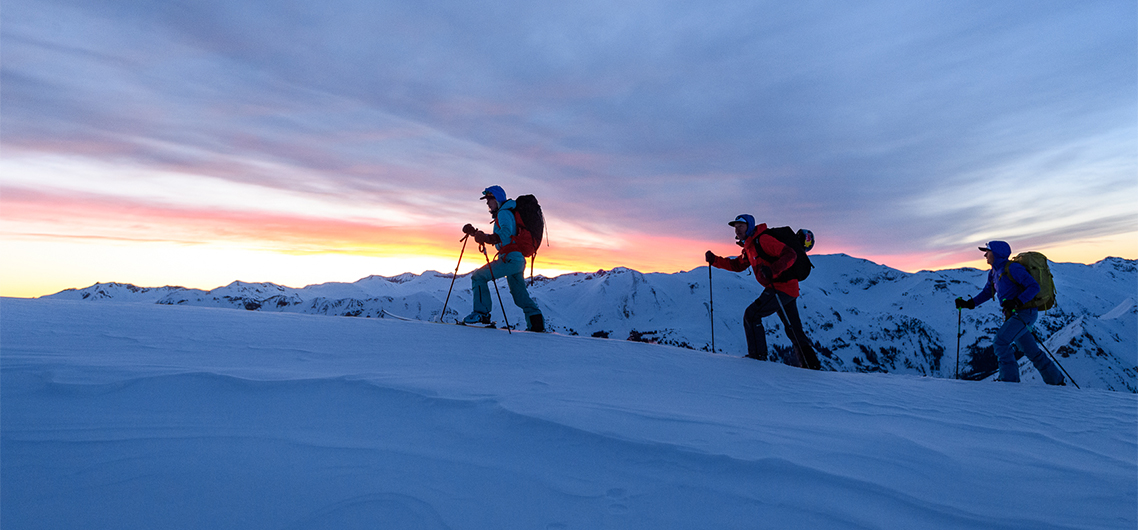Free shipping! Get free ground shipping on orders over $99 to the lower 48 states. Enter code FREE99
at checkout.


SCARPA athletes skinning up at sunrise, outside of Ouray, Colorado
Photo: Fred Marmsater
BY Bridgette McShea
As temperatures start to drop and anticipation starts to build, many skiers are trying to predict what the 2020/21 season will have in store. Newly implemented reservation systems and limited lift ticket availability at the resorts pose as a hassle to some winter enthusiasts. Others are simply looking to social distance. Whether it's due to the uncertainty surrounding this year’s ski season or you have been planning on getting an AT setup for a while now, we want to help make your backcountry dreams come true.
Boots will make or break a day in the backcountry. To get the most out of your tour and ensure you’re able get after that untouched powder, it’s important to have the right equipment. If you’re unsure which boots are best suited for you, consider these important factors.
What are your objectives? Are you all about the descent or longer days covering lots of miles?
What equipment do you already own?
We encourage you to visit your local SCARPA bootfitter this season. They will be able to help answer any of your questions and help determine the right boot and size for you. Your bootfitter will be able to help customize your fit and maximize comfort by heat molding the Intuition liners that come with all SCARPA boots. To find the bootfitter nearest you, check out our Dealer Locator.
When traveling in the backcountry this winter, please make sure to use best practices. Check the forecast before you go and carry a beacon, shovel, and probe at all times. Sign up for an avalanche education course and take advantage of the online resources available to you.
Featured Product

Related Stories

